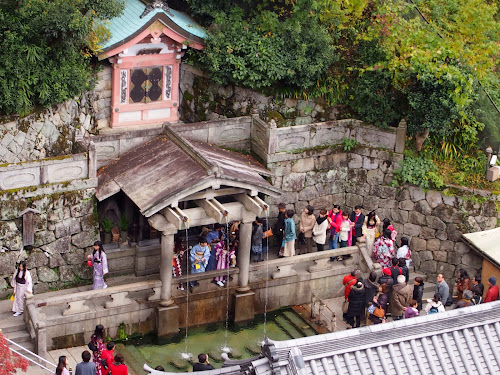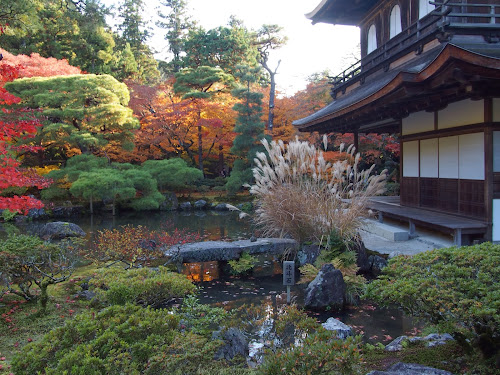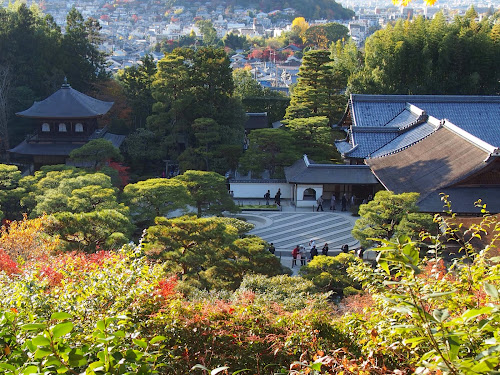It was Day Two and there was a lot more of Kyoto out there to be explored. Once again, we had the help of our guide Hiroe.
The first stop was Sanjusangen-do, a temple founded in the 12th century with the principle building long enough (120 meters) to boast an annual archery tournament alongside the building. But, it’s what’s inside this building that truly impresses and requires the exceptional length to house. Indeed, Sanjusangen refers to the 33 expanses between columns that comprise that expanse. Flanking a large Kannon with 11 heads and 42 arms (1000 arms when the extra arms are multiplied by the 25 planes of existence) are 1000 human size thousand-armed Kannon, 500 on either side.
On a more intimate scale, we joined a tea master for a tea ceremony and a lesson in the basics of preparing the tea with green tea matcha. The whisking required to make it properly was a lot more difficult than we expected. All of us needed help from the tea master.
We made our way through the Higashiyama District, up the winding approach and into the grounds of the Kiyomizudera temple with its enormous wooden balconies overlooking the landscape below. Drawn since the 8th century by the waters flowing from the Otowa waterfall, visitors drink from cups mounted on long poles from three streams each said to have a different benefit: longevity, success in school and a good love life (naturally). Back in the Edo period (prior to the Meiji Restoration), there was a tradition of jumping the 13 meters off the balconies to assure the granting of a wish. Surprisingly, some 85% of the 234 who jumped during the Edo period survived. There is no record of the percentage of wish fulfillment. Jumping is no longer permitted.
After a nice lunch of buckwheat every way imaginable, including (of course) in soba noodles, we headed out again and saw two familiar sights in tourist areas: young women touring in kimonos and young men offering rickshaw rides. Actually, we saw a fair number of people in rickshaws, especially where there was a steep paved path leading to an attraction.
Another retreat for a retiring shogun is Ginkakuji, turned into a temple after the death of Ashikaga Yoshimasa, the eighth Muromachi shogun and grandson of Ashikaga Yoshimitsu who built the Golden Pavillion. There are a number of suggestions of why it is now known as the Silver Pavillion. One is that he intended to cover it with silver, but it remained incompleted. Another is that the original shiny black lacquer, reflected in the pond, created a silvery appearance. Well, it is rather nice and the gardens are quite beautiful. The sand garden reportedly portraying waves and Mount Fuji as a moon viewing platform, however, suffered from the crowds swarming past it. Yoshimasa was a significant figure because his shogunate was blessed by a great flowering of traditional culture known as the Higashiyama Culture, during which there were important cultural advances in the tea ceremony, Noh theater, flower arranging, poetry, architecture and landscape design (which certainly shows here at Ginkakuji).

















